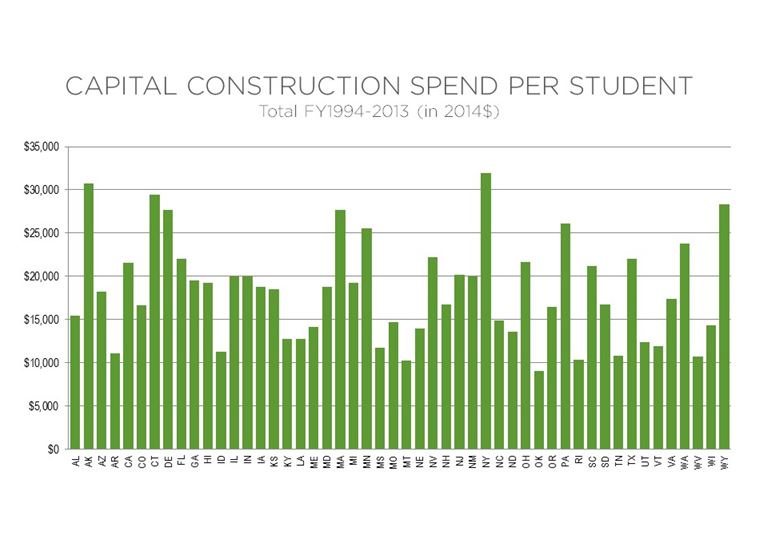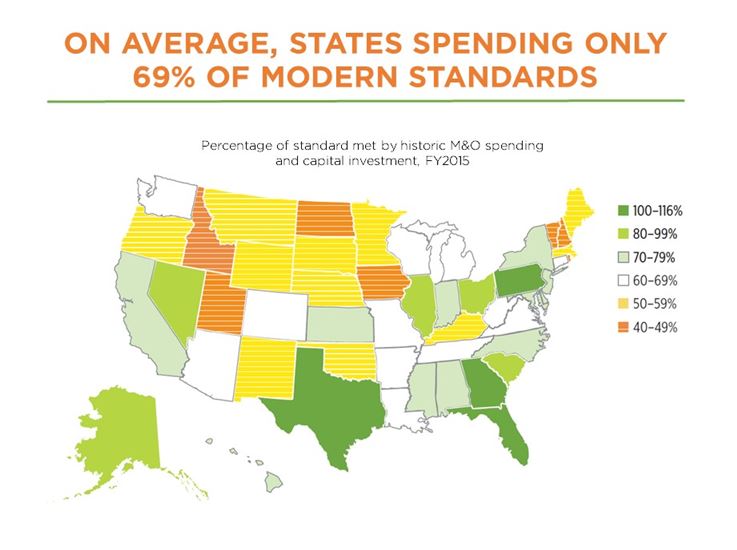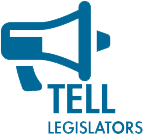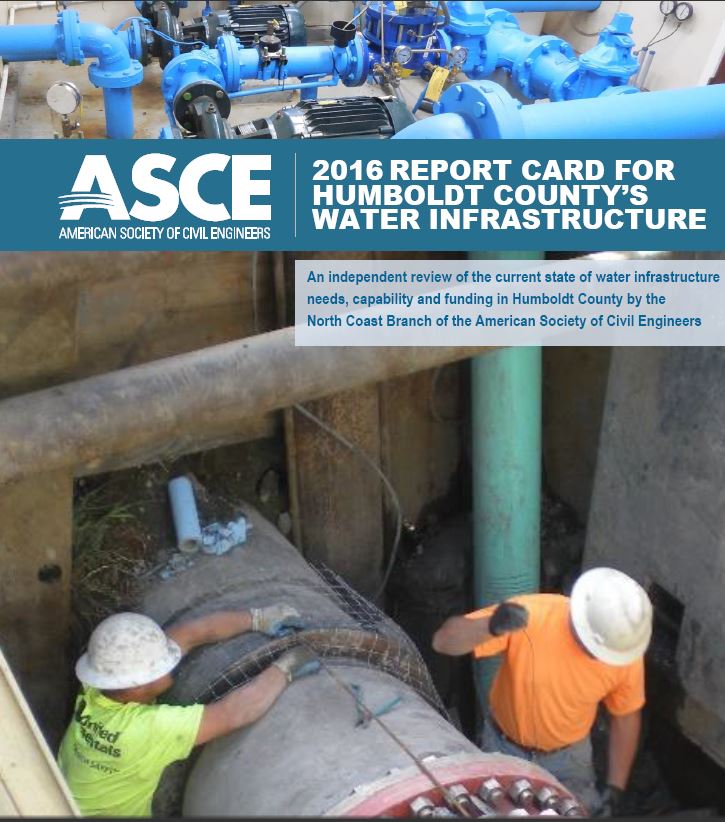Inaugural Round of FASTLANE Grant Recipients Released
July 13th, 2016 | By: Laura Hale
The U.S. Department of Transportation provided to Congress last week the list of 18 recipients of the first annual round of FASTLANE grants. The FASTLANE program was authorized by the FAST Act to fund critical freight and highway projects of national or regional significance. The grants can be used for highway, port, freight rail and intermodal projects. The FAST Act authorized $4.5 billion in funding for the FASTLANE program for fiscal years 2016-2020, with 25 percent reserved for rural projects, and 10 percent for smaller projects. While this investment is a great kick-start for the 18 recipient projects, the application process calls attention to the need to increase investment in our infrastructure as $10 billion worth of projects were requested, while only about a tenth of that was able to be funded. U.S. Sens. Jim Inhofe (R-OK) and Barbara Boxer (D-CA), chairman and ranking member of the Senate Environment and Public Works Committee, and Reps. Bill Shuster (R-PA) and Peter DeFazio (D-OR), chairman and ranking member of the House Transportation and Infrastructure Committee released a statement saying:“The demand for the FASTLANE program has already far exceeded expectations, receiving 212 applications for projects totaling roughly $10 billion, more than 10 times the available amount. This program is an important achievement of the FAST Act, and the response illustrates how critical freight and highway investments are to improving the movement of goods and reducing congestion.”The Fast Act provides for five years of certainty on the federal level for transportation projects, and the FASTLANE Grant program exemplifies the benefits that can happen when we make the investment. However, long-term funding looms large, as Congress still needs to #FixTheTrustFund with a sustainable funding source. Click on any project to learn more about it:
Our New Video: The high price we pay for inadequate infrastructure
July 6th, 2016 | By: Becky Moylan
As we shared in May, underinvesting in infrastructure comes at a high cost. It costs each family $9 a day. That adds up to $3,400 a year, according to our Failure to Act economic study. Watch the video below to find out more about how inadequate infrastructure costs you. And, more importantly, what we can do about it.New Jersey Infrastructure Receives D+ Report Card
June 16th, 2016 | By: America's Infrastructure Report Card
 Today, the 2016 Report Card for New Jersey’s Infrastructure gave an overall D+ grade for the State’s infrastructure. The report evaluated 13 separate components of New Jersey’s infrastructure, all of which were given a grade based on the components’ condition, capacity, funding, future need, operation and maintenance, public safety, resilience, and innovation. The transit and levee components received the lowest grade of D-, while solid waste received the highest grade of B-. The other individual grades were: bridges (D+), dams (D), drinking water (C), energy (C+), hazardous waste (C), parks (D+), ports (C), rail (C), roads (D+), and wastewater (D).
Throughout the report, the New Jersey Section of the ASCE calls attention to numerous challenges confronting the state’s vast and diverse infrastructure, many of which are magnified by the dangerous insolvency facing New Jersey’s Transportation Trust Fund (TTF). Key issues concerning infrastructure in the Garden State include:
Today, the 2016 Report Card for New Jersey’s Infrastructure gave an overall D+ grade for the State’s infrastructure. The report evaluated 13 separate components of New Jersey’s infrastructure, all of which were given a grade based on the components’ condition, capacity, funding, future need, operation and maintenance, public safety, resilience, and innovation. The transit and levee components received the lowest grade of D-, while solid waste received the highest grade of B-. The other individual grades were: bridges (D+), dams (D), drinking water (C), energy (C+), hazardous waste (C), parks (D+), ports (C), rail (C), roads (D+), and wastewater (D).
Throughout the report, the New Jersey Section of the ASCE calls attention to numerous challenges confronting the state’s vast and diverse infrastructure, many of which are magnified by the dangerous insolvency facing New Jersey’s Transportation Trust Fund (TTF). Key issues concerning infrastructure in the Garden State include:
- Of the state’s 6,657 bridges, the report found that 1 in 11 are classified as structurally deficient and the average age of New Jersey bridges is 51 years. More than 40% of the state’s bridges are expected to require repair or replacement in the near future.
- No single agency exists to oversee New Jersey’s 126 miles of levees, despite numerous reports citing significant condition issues with levees across the state.
- 42% of New Jersey’s roadway system is deficient, with many highways now past their anticipated lifespan. Deficient roads are costing the average driver $1,951 each year.
- 213 high and significant hazard dams in New Jersey are in poor or unsatisfactory condition, and hundreds of millions of dollars will be necessary to repair them.
- If the approaching insolvency of New Jersey’s Transportation Trust Fund is not addressed, there will be no permanent revenue source for the billions of dollars of critical investment that is needed in the state’s bridges, transit systems, railways, and roads.
- Establish a long-term funding source for the Transportation Trust Fund. This will generate the funds needed for highway, rail and transit projects.
- As evidenced by the aftermath of Superstorm Sandy, the state needs to continue to invest in resilient infrastructure that can better withstand severe weather events and limit the need for frequent, costly maintenance in the future.
- In order to address infrastructure assets facing delayed maintenance or replacement, the state must implement new technology and updated strategies to prioritize infrastructure investment.
House Passes Resolution Limiting Options to Fix the Highway Trust Fund
June 10th, 2016 | By: Laura Hale
Today the U.S. House of Representatives passed H. Con. Res. 112, a resolution introduced by Rep. Boustany (R-LA) and co-sponsored by 11 Republicans expressing Congress’ opposition to new fees on oil. As yesterday’s blog post highlighted, this resolution may be non-binding, but it puts Congress on the record in opposition to a viable option for fixing the Highway Trust Fund (HTF). Because the gas tax rate has not kept up with inflation, the HTF has been on the brink of insolvency many times in the past several years. Instead of addressing the HTF’s long-term solvency problem, Congress has relied on general funds transfers for the past eight years to prop up the fund, including most recently in the FAST Act. Rep. DeFazio (D-OR), ranking member of the Transportation and Infrastructure Committee, spoke passionately in opposition to the resolution. In under 24 hours, over 200 advocates responded to ASCE’s action alert and contacted their representatives in opposition to H. Con. Res. 112. Along with 30 coalition partners, ASCE sent a letter to Congress opposing the resolution. Rep. Blumenauer (D-OR) read extensively from the letter in his remarks on the House floor. As a concurrent resolution, H. Con. Res. 112 will pass over the Senate for debate and vote. It remains to be seen if that body will pick up the measure.Congressional Vote Could Limit Options to #FixTheTrustFund
June 9th, 2016 | By: Laura Hale
Tomorrow the U.S. House of Representatives will vote on H. Con. Res. 112, a concurrent resolution introduced by Rep. Boustany (R-LA) and co-sponsored by 11 Republicans that would express Congress’ opposition to new fees on oil. While non-binding, the resolution would put Congress on the record as opposing one option for fixing the Highway Trust Fund (HTF). For years now the HTF has been spending more than it has been bringing in. It has been propped up with $140 billion in general fund transfers since 2008. Its primary funding source, the motor fuels tax, has not been increased since 1993 and inflation has decreased its value by 40%. Unstable and insufficient federal funding for surface transportation is one the main reasons our infrastructure is in such poor shape. ASCE’s 2013 Report Card for America’s Infrastructure gave our nation’s roads a D, our bridges a C+ and our transit a D. The U.S. is on track to invest less than half of what is needed in surface transportation over the next decade. This will have a cascading impact on our nation’s economy, impacting productivity, GDP, employment, personal income, international competitiveness, and, most importantly, public safety. Every year this funding gap is not addressed it will cost American families $3,400 – that’s $9 a day because of underperforming infrastructure. The HTF needs a long-term funding solution and in order to get there, all options need to be on the table. H. Con. Res. 112 would eliminate a viable funding alternative and does not offer any strategy to #FixTheTrustFund and repair America’s deteriorating transportation infrastructure. Along with 30 coalition partners, ASCE sent a letter to Congress standing up for infrastructure and opposing H. Con. Res. 112. Want to help #FixTheTrustFund? Tell your congressman to oppose H. Con Res. 112!130 Congressmen Ask Colleagues to Fix the Highway Trust Fund
June 3rd, 2016 | By: Laura Hale
Last week 130 Members of Congress (73 Democrats and 57 Republicans) sent a letter to Chairman Brady (R-TX) and Ranking Member Levin (D-MI) of the House Ways & Means Committee urging them to include addressing the long-term solvency of the Federal Highway Trust Fund (HTF) in their plans for overhauling the U.S. tax code. They wrote: “The need for improvements to our nation’s infrastructure and safety programs is long overdue. However, the current finances of the HTF make it unable to support those investments…We recognize that tax reform legislation will be a heavy lift. Finding a solution requires ingenuity and will involve building consensus among competing interests and ideas, but we stand ready to work in partnership to reach this critical goal.” The HTF is supposed to fully fund the federal government’s investments in roads, bridges and transit, but for several years now it has been spending more money than it is taking in. The root of the HTF’s solvency problem lies in its primary funding source: the federal motor fuels tax. The federal motor fuels tax of 18.4 cents per gallon for gas and 24.4 for diesel has not been raised since 1993 and inflation has decreased its real value by 40%. To fill the gap, Congress has been diverting general fund dollars into the HTF since 2008. The FAST Act, the five year surface transportation bill signed in December 2015, included a $70 billion transfer from the general fund to the HTF. Even with the passage of the FAST Act, our nation’s current level of investment in surface transportation is less than half of what’s actually needed. ASCE’s new report shows that the U.S. needs to invest an additional $1.1 trillion in surface transportation over the next ten years (from federal, state, local and private sources). Failing to sufficiently invest in America’s deteriorating infrastructure will have a cascading impact on our nation’s economy, impacting business productivity, GDP, employment, personal income, international competitiveness, and, most importantly, public safety. The report found that if the surface transportation funding gap is not addressed, the U.S. will lose over $1.2 trillion in GDP and 1.1 million jobs by 2025. Over the past 30 years, all increases in the federal motor fuels tax have occurred as a part of larger tax reform packages, Therefore, Reps. Brady and Levin’s work could offer an opportunity for Congress to finally provide an adequate, sustainable funding source for the HTF. ASCE strongly supports increasing the federal motor fuels tax a sufficient amount at the federal level to stop the need for general fund transfers and allow for increased investment to close the widening gap. Additionally, ASCE supports the creation of additional pilot programs to test charging motorists based on how much they use roads with the long-term goal of using mileage-based user fees to fund the federal HTF.2050 Infrastructure Starts Today
May 30th, 2016 | By: America's Infrastructure Report Card
As part of Infrastructure Week, one of the most compelling conversation topics was the future of infrastructure because to make it happen, the future really has to start being built today. If the trendiest topic today is the driverless car, what infrastructure has to be in place to make that work? If sensor technology is changing how we monitor everything from water to traffic, what will the infrastructure internet of things be able to replace? How can we plan for infrastructure that will lead to the future we want? While we all know that America has their hands full with today’s problems, we also must be realists – planning 2025, 2040 and 2050’s infrastructure starts by stopping endless debating and starting to implement great ideas today. This was the key take-away from the one of the Infrastructure Week events hosted by AEM with Congressman Garret Graves (Infrastructure Week Congressional Co-Chair), Mayor Sly James of Kansas City, Missouri, Ronald De Feo (CEO of Kennametal & Chair and AEM’s Infrastructure Vision 2050), Amanda Eversole (President of Center for Advanced Technology and Innovation), Steve Morrison (Amtrak Account Manager for Siemens Industry, Inc.), and Derek Woodgate (Chief Futurist at The Future’s Lab, Inc.). Mayor James had a great example of getting future infrastructure to work with the new Kansas City Streetcar Project. When they were going to put in a streetcar, they didn’t stop there – they looked at what else could be done while work was being done. This included replacing aging water pipes and installing new fiber. They also implemented new, versatile technology along the route. A great example of this is the kiosks around streetcars that will be able to help citizens with everything from simple answers to reporting incidents. The kiosks have allowed Missouri to use the data collected to create phone apps and fight crime. The project ended up almost completely paying for itself and creating jobs since companies are willing to pay for the data. When we stop thinking of infrastructure as just one project, like a Streetcar, and start taking in the larger view of what can be accomplished and enhanced, we’ll transform our infrastructure and our cities by 2050. Written with an assist by Infrastructure Week intern Nicole ErdelyiInfrastructure Week Events to Check Out
May 12th, 2016 | By: America's Infrastructure Report Card
There’s a great line up of events happening for Infrastructure Week! See what’s happening near you!Infrastructure Week Calendar of Events
U.S. School Facilities Are $46B Away from Modern Standards
March 29th, 2016 | By: America's Infrastructure Report Card
Every year the U.S. is spending $46 billion less on school facility construction and maintenance that is needed to keep our kids, teachers and staff in safe and modern facilities. This is the new finding from the State of Our Schools report which looks at the condition of the schools we send 1 in every 6 Americans into every day. Almost half of America’s public school buildings were built to educate the baby boomers – a generation that is now retiring from the workforce. Public school enrollment is projected to gradually increase through 2019, yet state and local school construction funding continues to decline. While what is taught in schools is often the focus of elected leaders, it’s clear that the buildings should also be part of the conversation.
Here are a few charts that show how your state stacks up in funding and supporting modern school facilities.


 Want to find out more? Read the full State of Our Schools report. Read the Washington Post coverage of the new report or take a minute to tell your elected officials who make decisions on schools about this new report.
Want to find out more? Read the full State of Our Schools report. Read the Washington Post coverage of the new report or take a minute to tell your elected officials who make decisions on schools about this new report.

Looking Into Humboldt County’s Water Infrastructure
March 24th, 2016 | By: America's Infrastructure Report Card
 Today the North Coast Branch of the American Society of Civil Engineers released a new 2016 Report Card for Humboldt County’s Water Infrastructure to show the state of the water infrastructure across 19 water systems within Humboldt County, California. The report found that today’s water infrastructure earned a good B grade overall, but to keep a good grade, planning must begin today for the infrastructure that is aging and will need replacement over the next 10 years. The report shows that over the next 5 to 10 years, local agencies need to plan for approximately $90 million in investments to maintain the existing system at its current condition.
ASCE was joined by several owners and operators to release the new report; the speakers included:
Today the North Coast Branch of the American Society of Civil Engineers released a new 2016 Report Card for Humboldt County’s Water Infrastructure to show the state of the water infrastructure across 19 water systems within Humboldt County, California. The report found that today’s water infrastructure earned a good B grade overall, but to keep a good grade, planning must begin today for the infrastructure that is aging and will need replacement over the next 10 years. The report shows that over the next 5 to 10 years, local agencies need to plan for approximately $90 million in investments to maintain the existing system at its current condition.
ASCE was joined by several owners and operators to release the new report; the speakers included:
- Yoash Tilles, P.E. Chair, Report Card for Humboldt County’s Infrastructure
- Cameron Muir, E.I.T, Practitioner Adviser, ASCE North Coast Branch
- Barbara Hecathorn, President, Humboldt Bay Municipal Water District Board of Directors
- George Wheeler, President, McKinleyville Community Services District Board of Directors
- Greg Orsini, General Manager, McKinleyville Community Services District
- Michael Flockhart, Public Works Director, Bear River Band of the Rohnerville Rancheria
- Marcus Drumm, General Manager, Loleta Community Services District
- Mark Lovelace, 3rd District Humboldt County Board of Supervisors



 */ ?>
*/ ?>













